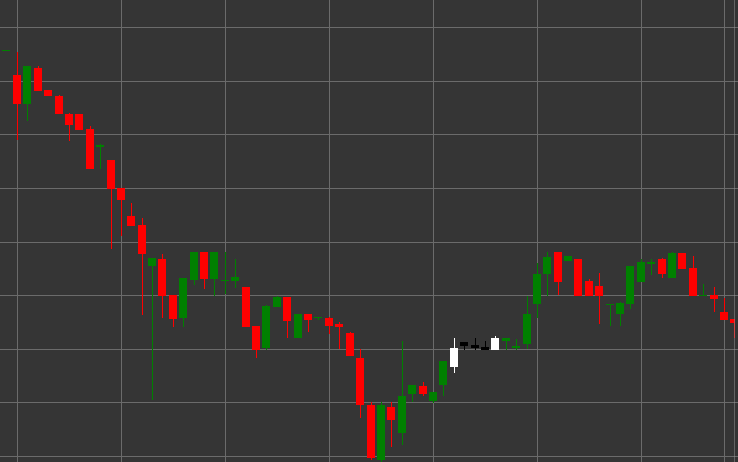Pattern Rising Three Methods
Rising Three Methods is a bullish trend continuation pattern consisting of five candles that forms in an uptrend. This pattern shows a temporary consolidation or rest within an existing uptrend before its continuation.
Key Features:
- First candle is white (bullish) with opening price lower than closing price (O < C) and a long body.
- The next three candles are black (bearish) with opening price higher than closing price (O > C), with small bodies (B * 3 < pB), (B == pB), (B == pB).
- The bodies of the three middle candles do not extend beyond the range of the first candle.
- Fifth candle is white (bullish) with opening price lower than closing price (O < C) and a long body (B > pB * 3).
- The fifth candle breaks through the high of the first candle and closes higher.
- Forms in an uptrend.

Interpretation
Rising Three Methods is considered a reliable signal of uptrend continuation:
- The first long white candle shows the strength of the uptrend.
- Three small black candles represent a temporary consolidation or correction, during which sellers were unable to significantly change the trend.
- The fifth long white candle confirms the return of control to buyers and the continuation of the uptrend.
- This pattern can be viewed as a flag or pennant in classical technical analysis.
- Such a sequence of candles indicates that the correction was used to accumulate long positions before continuing the upward movement.
Trading Strategies
Rising Three Methods provides good opportunities for entering or strengthening long positions:
- Enter a long position at the opening after the fifth candle or when the high of the first candle breaks.
- Place a stop-loss below the low of the correction candles or below the low of the first candle.
- Target profit can be set using a projection equal to the distance from the beginning of the trend to the first candle of the pattern.
- Pay attention to volume - ideally, volume decreases on the three middle candles and significantly increases on the fifth candle.
- Combine with other technical indicators to confirm the signal.
- Consider important resistance levels above the current price that may affect the development of the movement.